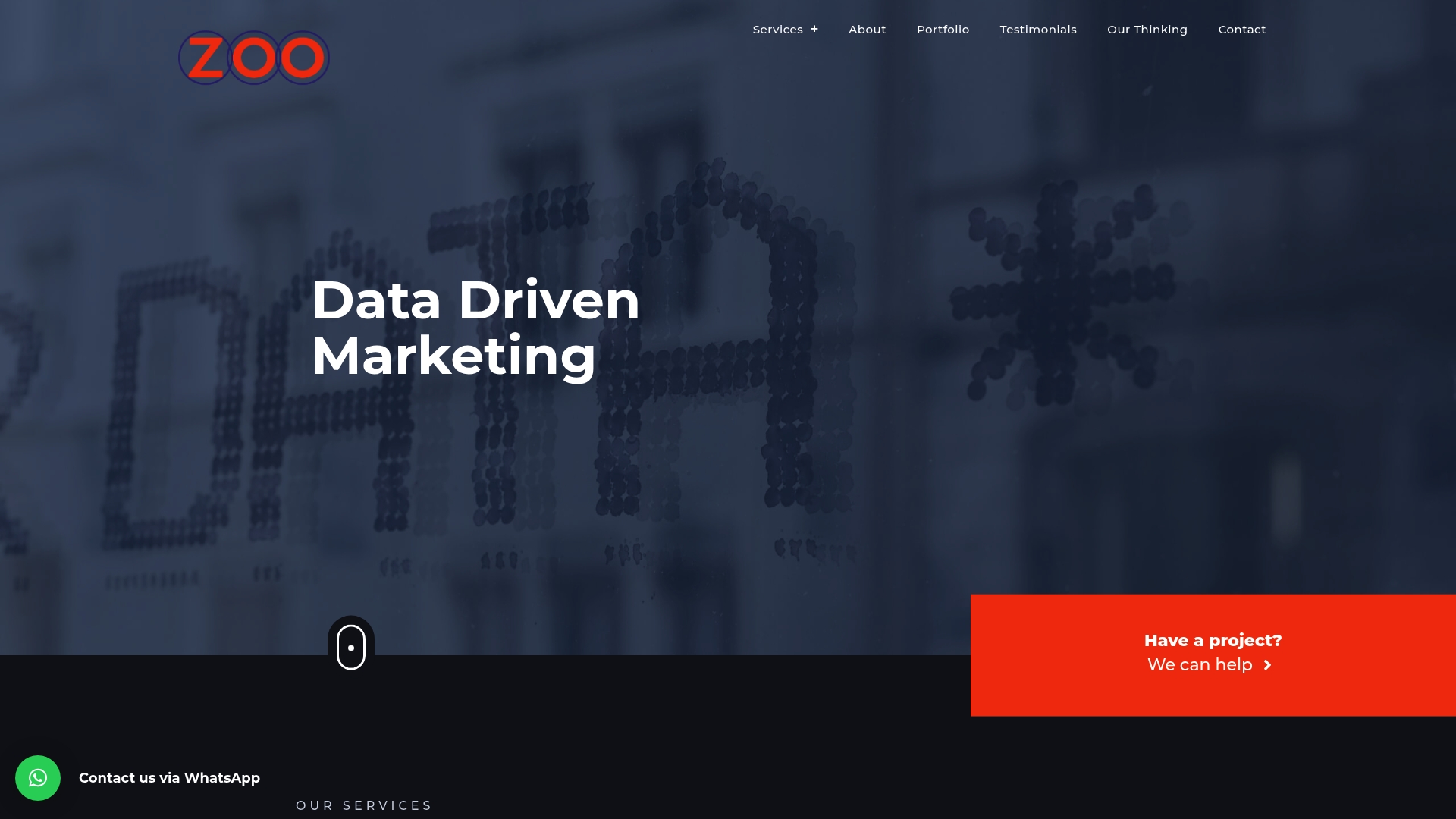Website analytics sound like a techy headache for most South African business owners. And yet, over 70 percent of businesses using analytics see measurable improvements in decision-making. Most surprising is how the real value of website analytics is not just the stats and graphs. It is the clarity you get about what your customers actually want and do online.
Table of Contents
- Understanding Website Analytics Basics
- Key Metrics Small Businesses Should Track
- Choosing the Right Analytics Tools
- Using Website Data to Grow Your Business
Quick Summary
| Takeaway | Explanation |
|---|---|
| Track Key Website Metrics | Focus on metrics like visitor volume, bounce rate, and conversion rate for comprehensive performance insights. |
| Select the Right Analytics Tools | Choose tools that align with your analytics needs and business goals for effective data tracking. |
| Use Data to Inform Strategy | Analyze visitor behavior patterns to refine marketing and content strategies for better customer engagement. |
| Continuous Review and Adaptation | Regularly assess website performance metrics to adjust strategies and stay competitive in the digital landscape. |
| Segment Customers for Better Insights | Understand diverse customer behaviors by segmenting data, enabling targeted marketing and content creation. |
Understanding Website Analytics Basics
Website analytics transform raw digital data into actionable insights for business growth. Understanding these foundational metrics enables business owners to make strategic decisions about online performance and user engagement.
What Are Website Analytics?
Website analytics represent the systematic measurement and analysis of website visitor interactions and behaviors. Learn more about data-driven marketing strategies to understand how these insights drive business decisions. According to the University of Washington’s digital guide, website analytics provide critical information about user experience, revealing how visitors interact with your digital platform.
The core purpose of website analytics is to track, collect, measure, and analyze website data. This includes understanding visitor demographics, tracking user journeys, measuring engagement levels, and identifying potential areas for improvement. Business owners can uncover patterns in user behavior that directly impact website performance and marketing effectiveness.
Key Metrics Every Business Owner Should Track
Tracking the right metrics helps businesses understand their online performance comprehensively. According to OpenStax’s information systems research, several critical metrics deserve attention:
- Visitor Volume: Total number of unique visitors to your website, indicating overall reach and potential audience size.
- Bounce Rate: Percentage of visitors who leave your website after viewing only one page, suggesting content relevance and user experience quality.
- Conversion Rate: Proportion of visitors who complete a desired action, such as making a purchase or signing up for a newsletter.
- Time on Page: Average duration visitors spend on specific website pages, revealing content engagement levels.
These metrics provide a snapshot of website performance, helping business owners understand user interactions and optimize digital strategies accordingly. By analyzing these data points, companies can make informed decisions about content development, user experience improvements, and marketing resource allocation.
Implementing Website Analytics Effectively
Successful website analytics implementation requires strategic approach and consistent monitoring. Start by selecting a robust analytics platform that offers comprehensive tracking capabilities. Google Analytics 4 remains a popular choice for many businesses due to its advanced features and user-friendly interface.
Implement tracking codes across your website to ensure accurate data collection. Configure custom goals that align with your specific business objectives, whether increasing online sales, generating leads, or improving user engagement. Regular review and interpretation of analytics data will help you continuously refine your digital strategy and respond to changing user behaviors.
Remember that website analytics are not just about collecting numbers but understanding the story behind those metrics. Each data point represents a potential opportunity to enhance user experience, optimize marketing efforts, and drive business growth.
Key Metrics Small Businesses Should Track
Small businesses operate in a competitive digital environment where understanding website performance is crucial for sustainable growth. Explore strategic marketing approaches that leverage precise metric tracking to drive business success.
Essential Performance Indicators
According to the U.S. Chamber of Commerce, small businesses must focus on nine critical website metrics that provide comprehensive insights into digital performance. These metrics go beyond simple visitor counts, offering nuanced understanding of user behavior and website effectiveness.
Key performance indicators reveal how potential customers interact with your digital platform. By tracking these metrics systematically, business owners can make data-driven decisions that optimize marketing strategies, improve user experience, and ultimately increase conversion rates.
Below is a table summarising the essential website performance metrics every small business owner should monitor. This table organises each metric with its definition and why it’s important.
| Metric | What It Measures | Why It Matters |
|---|---|---|
| Sessions | Total visitor interactions in a set timeframe | Indicates traffic and engagement trends |
| Unique Visitors | Number of individual users visiting the site | Shows true reach and audience size |
| Traffic Sources | Where visitors come from (search, social, direct) | Helps target marketing and discover growth areas |
| Bounce Rate | Percent who leave after one page | Flags possible user experience or content issues |
| Conversion Rate | Percent who complete a goal (sale, signup, etc.) | Tracks effectiveness in driving business outcomes |
| Avg. Time on Page | How long users stay on each page | Reveals engagement and content relevance |
Detailed Metric Breakdown
The SCORE organization recommends tracking the following essential metrics:
- Sessions: Total number of visitor interactions within a specific timeframe, indicating overall website traffic and engagement.
- Unique Visitors: Count of individual users visiting your website, helping understand your actual audience reach.
- Traffic Sources: Breakdown of where website visitors originate (search engines, social media, direct visits), enabling targeted marketing efforts.
- Bounce Rate: Percentage of visitors leaving after viewing only one page, signaling potential issues with content relevance or user experience.
- Conversion Rate: Proportion of visitors completing desired actions like purchases or sign-ups, directly measuring website effectiveness.
- Average Time on Page: Duration visitors spend on specific webpages, reflecting content quality and user engagement.
Strategic Metric Interpretation
Successful metric tracking requires more than collecting numbers. Business owners must develop skills in interpreting these data points strategically. Look for patterns that indicate strengths and weaknesses in your digital presence.
For instance, a high bounce rate might suggest the need for more compelling content or improved website design. Conversely, increasing conversion rates could validate recent marketing strategies or content improvements.
Regular analysis of these metrics allows small businesses to adapt quickly, reallocate resources efficiently, and create more targeted marketing campaigns. Consider setting up monthly review sessions to discuss analytics findings and develop actionable improvement strategies.
Remember that website metrics are dynamic. What works today might require adjustment tomorrow. Continuous learning and flexible approach to digital performance tracking will help small businesses stay competitive in the rapidly evolving online marketplace.
Choosing the Right Analytics Tools
Selecting the appropriate analytics tools can transform how small businesses understand and leverage their digital performance. Discover data-driven marketing strategies that help you make informed tool selection decisions.
Evaluating Analytics Tool Requirements
According to the University of Washington’s digital guide, businesses must consider multiple factors when choosing analytics platforms. The right tool should provide comprehensive insights, user-friendly interfaces, and robust tracking capabilities that align with specific business objectives.
Key considerations include the tool’s ability to track essential metrics, integration capabilities with existing digital infrastructure, cost-effectiveness, and scalability. Small businesses need flexible solutions that can grow alongside their digital presence, offering detailed yet digestible performance data.
Recommended Analytics Platforms
Below is a comparison table of recommended analytics tools highlighting key features and unique strengths for small businesses considering website analytics platforms.
| Platform | Key Features | Notable Strengths |
|---|---|---|
| Google Analytics 4 | Advanced tracking, machine learning, free | Comprehensive data, no cost |
| Microsoft Clarity | Heatmaps, session recordings, visual insights | Deep dive into user interactions |
| Siteimprove | Integrated analytics, optimisation, accessibility | Combines analytics with site quality |
| Hubspot Analytics | Website analytics + CRM integration | Tracks performance & customer journey |
Each platform offers unique strengths. Google Analytics remains popular for its extensive features and zero cost, while specialized tools like Microsoft Clarity provide more nuanced user interaction insights.
Strategic Tool Implementation
Successful analytics tool implementation requires more than simply installing tracking code. Businesses must configure custom goals, set up proper tracking parameters, and develop a consistent review process.
Start by identifying your primary business objectives. Are you looking to increase online sales, improve user engagement, or understand customer demographics? Different tools excel in different areas, so align your selection with specific goals.
Consider integration capabilities with your existing marketing and sales platforms. A tool that seamlessly connects with your customer relationship management system or email marketing software can provide more holistic insights.
Remember that no single tool offers a perfect solution. Many businesses benefit from using multiple platforms to gain comprehensive insights. Regular evaluation and willingness to adapt your analytics approach will ensure you continue extracting maximum value from your digital performance data.
Using Website Data to Grow Your Business
Website data represents a powerful strategic asset for businesses seeking sustainable growth and competitive advantage. Explore data-driven marketing strategies that transform raw analytics into actionable business insights.
Transforming Data into Strategic Opportunities
Successful businesses recognize website data as more than numbers on a screen. These metrics tell a comprehensive story about customer behavior, preferences, and potential market opportunities. By carefully analyzing website analytics, businesses can develop targeted strategies that directly address customer needs and market demands.
Understanding customer journey patterns allows businesses to optimize their digital presence. This means identifying which pages attract the most engagement, where potential customers drop off, and what content resonates most effectively with your target audience. Such insights enable precise marketing resource allocation and more efficient business decision-making.
Practical Data Application Strategies
Effective data utilization requires a systematic approach. Business owners should focus on several key areas:
- Customer Segmentation: Use website data to understand different customer groups, their behaviors, and unique preferences.
- Content Optimization: Analyze page performance to create more compelling and relevant content that drives engagement.
- Conversion Pathway Analysis: Identify and remove obstacles in the customer journey that prevent potential sales or interactions.
- Predictive Planning: Use historical data trends to forecast future customer behaviors and market opportunities.
For instance, if analytics reveal that mobile users spend less time on your website compared to desktop users, this signals a need for improved mobile design and user experience. Similarly, tracking conversion funnels can help pinpoint exactly where potential customers lose interest, allowing for targeted improvements.
Continuous Improvement and Adaptation
Website data is not a static resource but a dynamic tool for continuous business evolution. Regular analysis and willingness to experiment are crucial. Implement A/B testing for website elements, track the results, and make data-driven adjustments.
Consider setting up monthly or quarterly review sessions dedicated to analyzing website performance metrics. During these sessions, compare current data against previous periods, discuss insights, and develop actionable strategies. This approach ensures your business remains responsive to changing customer behaviors and market dynamics.
Remember that data interpretation requires both technical understanding and creative thinking. Numbers provide the foundation, but strategic insight transforms raw data into meaningful business growth opportunities. By developing a culture of data-driven decision-making, businesses can create more targeted, efficient, and customer-centric strategies that drive sustainable success.

Frequently Asked Questions
What are website analytics?
Website analytics refers to the systematic measurement, collection, and analysis of website visitor interactions and behaviors. It helps business owners understand how users engage with their site and informs strategic decision-making.
Why should small business owners track website metrics?
Tracking website metrics allows small business owners to gain insights into visitor behaviours, optimize user experience, improve marketing tactics, and ultimately increase conversion rates, making data-driven decisions more effective.
Which key metrics should I focus on for my website?
Key metrics to focus on include visitor volume, bounce rate, conversion rate, and average time on page. These indicators provide a strong overview of your website’s performance and areas needing improvement.
How can website data help grow my business?
Website data can inform targeted strategies by revealing customer preferences and behaviours. This allows businesses to optimise content, segment customers effectively, and identify opportunities for improved marketing efforts.
Unlock the Real Power of Your Website Analytics Now
Are you feeling uncertain about what your website data actually means for your business growth? If you are frustrated by bounce rates and uncertain about how to improve your conversion rate, you are not alone. Many business owners struggle to transform analytics into real results. By focusing on metrics like visitor volume, conversion rate, and strategic customer segmentation, you can move beyond confusing statistics and start making data work for you. For strategies that turn insight into action, visit our Digital Strategy solutions.

Take the next step with a partner who delivers clarity and results. Zoo Digital sets up advanced tracking, configures your analytics, and builds targeted campaigns that boost sales and deliver answers. Success starts when you turn your website data into clear strategy. See how we help businesses like yours on Zoo Digital today.
Recommended
- How to Use Marketing Analytics for Small Businesses in 2025 – Zoo Digital
- How to Build a Marketing Strategy for Small Businesses in 2025 – Zoo Digital
- Digital Marketing Terms Explained for Small Businesses 2025 – Zoo Digital
- How to Start Online Advertising: Guide for Small Businesses 2025 – Zoo Digital
